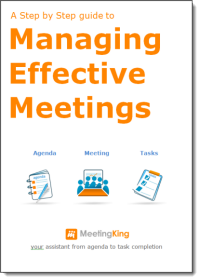Meeting facilitation is the art of making meetings run smoother. Meeting facilitators help meeting participants to stick to an agenda and progress through that agenda without getting stuck on difficult issues. It is the responsibility of the meeting facilitator to make sure that everyone gets an opportunity to contribute to the meeting, and meeting facilitation involves being responsible to everyone at the meeting, not just the person that asked for meeting facilitation.
One of the reasons for having a meeting facilitator is that sometimes it can be hard to come to a consensus when there are so many different and maybe conflicting points of view about a particular issue. Meeting facilitation can help groups of people to work through these issues to move forward and progress.
Meeting facilitation is not limited to simply introducing everyone at the meeting and asking for points of view from different people. Rather, meeting facilitation requires the facilitator to be able to think on his/her feet and come up with objective suggestions that help to smooth the way forward, especially when difficult decisions are being discussed. The best meeting facilitators may come from outside the department or team holding the meeting, but that is not necessarily the case. Either way, the meeting facilitation must be unbiased and performed by an individual that does not have a direct interest in the outcome of the meeting.
The meeting facilitator must understand and communicate the goal of the meeting at the outset. This will help the facilitator to steer the meeting towards reaching that goal. Throughout the meeting, the facilitator should have the end goal in mind, making sure that everyone is working towards that goal. If not, it is the job of the facilitator to get the meeting back on track, and/or bring it back to the agenda if it has strayed.
Meeting facilitation can work well with tools to keep it on track. With its built-in agenda, task allocation, minutes and parking lot, MeetingKing can be a useful tool for this purpose. A tool with an agenda helps the facilitator to coordinate the meeting and keep it on track, while directly after the meeting, minutes can be distributed to the attendees to remind them of any decisions and action items agreed to. Having a parking lot is particularly useful, as it allows facilitators to move particular issues to the side if they are not directly relevant to the outcome of the meeting, while ensuring that they do not get forgotten about.
Meeting facilitation can involve anything from guiding a discussion through to planning and structuring a meeting so that it will reach the desired outcome. To facilitate effectively, it is important that the meeting facilitator states the “rules” of the meeting at the outset. These may include not talking over one another, how to raise points, not going off track, or subjects that are not to be included, among others. If these rules are broken, the facilitator should not be shy about stepping in, as this will keep the meeting on topic.
Finally, with meeting facilitation it is important that everyone gets a chance to have their say. The facilitator should keep an eye on attendees to make sure that they are involved and included in the meeting. If they seem as if they are pulling back, it is the role of the facilitator to bring them back in again, perhaps by asking them what they think about a particular subject.


